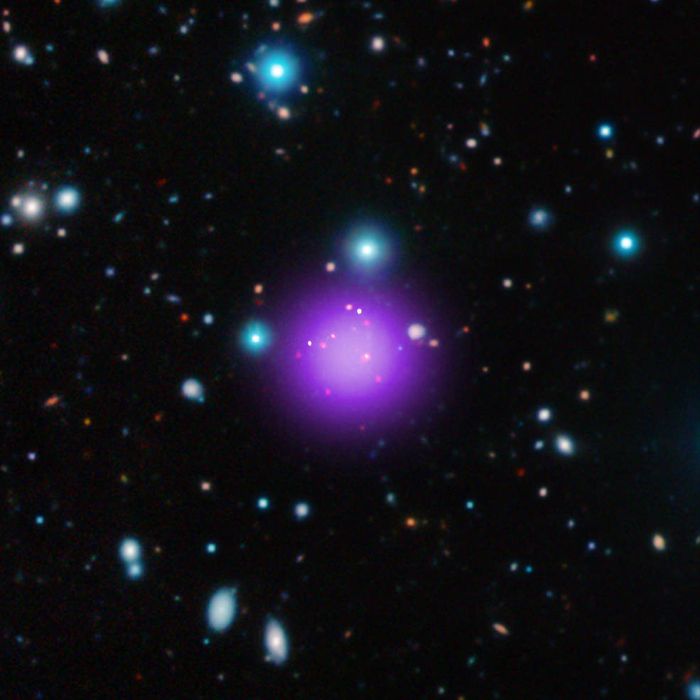
 Credit: NASA/CXC/CEA/T. Wang et al; Infrared: ESO/UltraVISTA; Radio: ESO/NAOJ/NRAO/ALMA
Credit: NASA/CXC/CEA/T. Wang et al; Infrared: ESO/UltraVISTA; Radio: ESO/NAOJ/NRAO/ALMA
Far and Away
Studies of clusters of galaxies, groups of galaxies bound together by their mutual gravity, provide crucial information about the how galaxies produce stars, and how the Universe itself grows and evolves. The mass of normal matter in clusters is actually dominated not by the stars in the individual cluster galaxies but rather by enormous, super-hot clouds of diffuse gas trapped by the combined gravitational pull of the galaxies in the cluster. These huge, diffuse clouds are hot enough to emit X-rays, so that X-ray images obtained with telescopes like the Chandra X-ray Observatory and the XMM-Newton observatory help astronomers determine if a group of galaxies that seem close on the sky actually form a gravitationally-bound structure. Using Chandra, XMM-Newton and ground-based observatories, astronomers have announced the discovery of what is likely to be the most distant cluster of galaxies ever found, at a distance of more than 11 billion lightyears from earth. The image above is a composite image of this cluster in X-rays (shown in purple) and in infrared and radio emission. These observations show that galaxies near the center of the cluster have extremely large rates of star formation. This cluster appears to be a previously-missing link between mature, fully-formed clusters and younger proto-clusters which are still in the process of formation.
Published: September 5, 2016
<
HEA Dictionary ● Archive
● Search HEAPOW
● Other Languages
● HEAPOW on Facebook
● Download all Images
● Education ● HEAD
>

Each week the HEASARC
brings you new, exciting and beautiful images from X-ray and Gamma ray
astronomy. Check back each week and be sure to check out the HEAPOW archive!
Page Author: Dr. Michael F. Corcoran
Last modified Monday, 26-Feb-2024 17:34:46 EST


